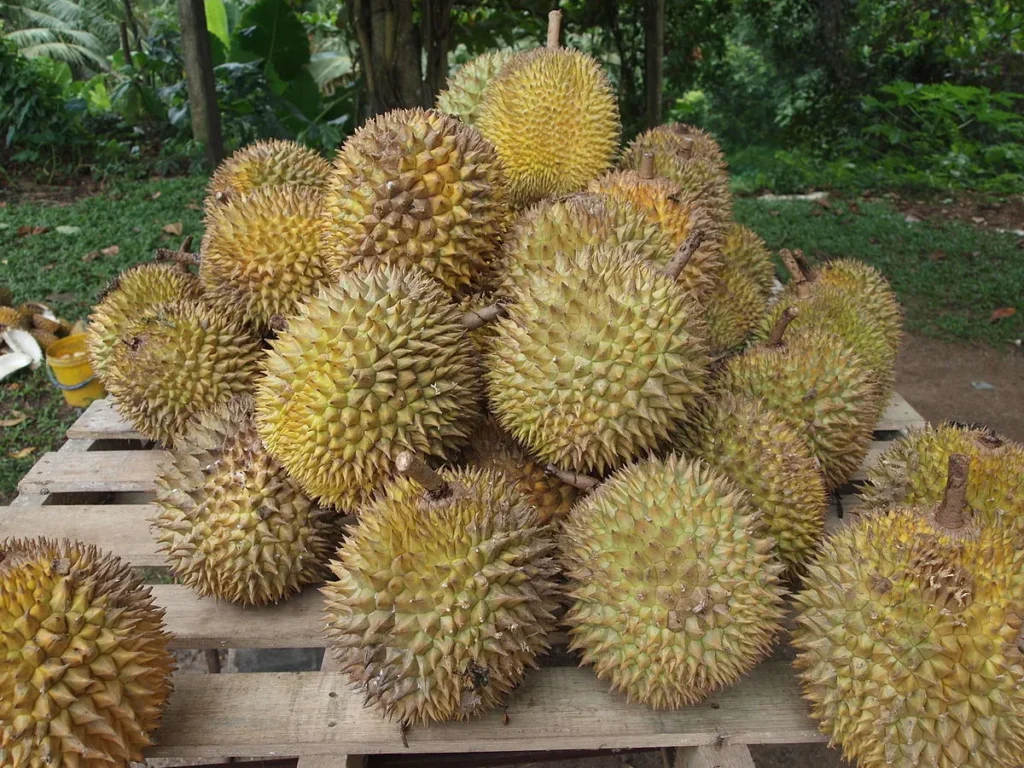Vietnam’s Durian Exports to China Drop 80 Percent Amid Stricter Regulations

Hanoi, The Gulf Observer: Vietnam’s durian exports to China plummeted by 80 per cent in the first half of February 2025, with only 3,500 tonnes shipped, according to the Ministry of Agriculture and Rural Development (MARD). This significant decline has directly impacted the country’s fruit and vegetable export revenues, which totaled US$416 million in January 2025, reflecting an 11.3 per cent month-on-month decrease and a 5.2 per cent year-on-year drop.
The primary cause of the sharp downturn is China’s tightened inspection measures for imported durians, particularly concerning cadmium and Auramine O (Basic Yellow 2 – BY2) residues. These regulatory changes were introduced following violations detected in Thai durians. From early 2025, China mandated residue testing for all shipments in accredited laboratories, significantly extending export procedures. The prolonged testing process has disrupted delivery schedules, resulting in congestion at border gates. Some traders have turned to grey-market exports, but this approach remains unsustainable for the long-term stability of Vietnam’s durian industry.
Deputy Minister of Agriculture and Rural Development Phùng Đức Tiến acknowledged that while China’s stricter controls aim to ensure food safety, they pose considerable challenges for exporters and farmers. Phan Thị Mến, CEO of Sutech Science and Technology Consulting Co., Ltd., noted that due to the rigorous inspections, export volumes have plunged, and on some days, no shipments could be processed.
Deputy Chairman of Lạng Sơn Province’s People’s Committee Đoàn Thanh Sơn emphasized that China had repeatedly warned Vietnamese exporters to enhance quality control. However, many traders have struggled to fully adapt, making compliance difficult.
In response, Deputy Minister Hoàng Trung announced that aside from the nine testing laboratories already recognized by China, six more have been submitted for approval to expedite the export process. This initiative comes as Vietnam’s durian and other fruit harvests reach their peak.
Vietnam currently has approximately 169,000 hectares of durian plantations, more than double the area planned for 2030, which was initially set at 65,000–75,000 hectares. Additionally, a significant proportion of these plantations have reached harvestable maturity.
To address China’s heightened food safety measures on Vietnamese fruit exports, MARD has directed relevant agencies and local authorities to implement stricter quality management models. Special emphasis is being placed on chemical use in plantations and packaging facilities to ensure compliance.
The Vietnamese Government is also engaging in negotiations with China to restore previous export regulations, aiming to streamline inspection procedures and facilitate smoother customs clearance. Furthermore, some exporters are exploring alternative markets to reduce over-reliance on China and establish a more stable and diversified export strategy for Vietnam’s durians.


